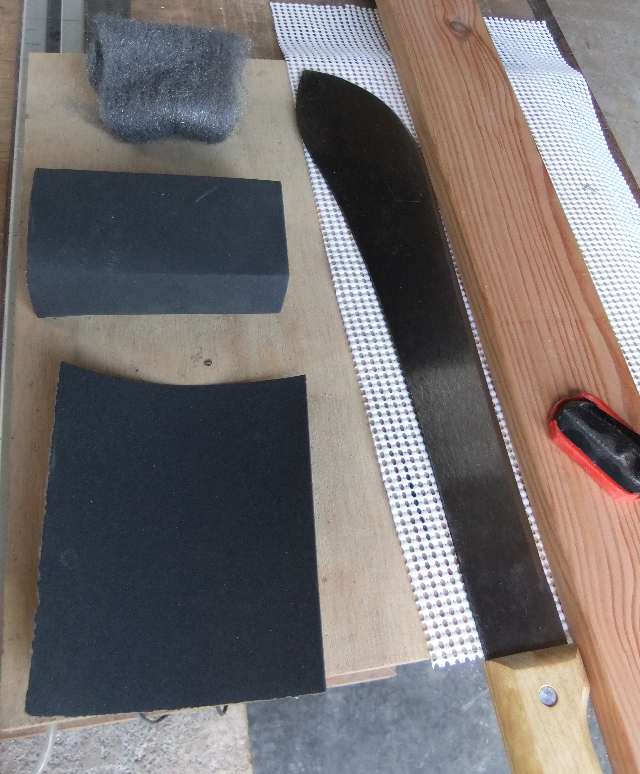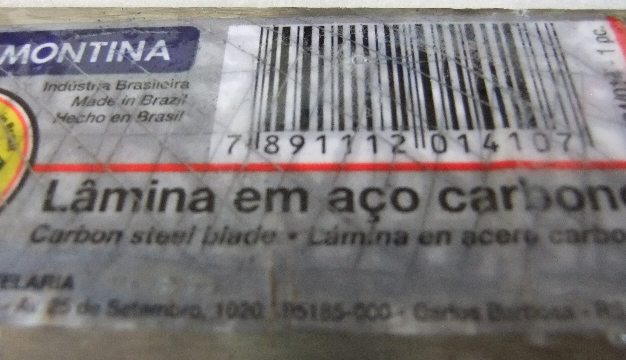How do you remove the coating off the blade?
This article was copied from our FAQs page!
Again, Safety first! Notice there is a common theme happening?
In our workshop we needed a safer way to work on the big flats on the steel blade.We lay the machete down on a stable, clean flat surface with a thin non slip matt between the blade and bench. We hang the handle over the bench so the machete lays flat. This setup minimised how much of the edge is exposed and allows us to keep a firm stable grip on the handle. Sanding blocks are always used to keep our fingers further away from the edge. Clamping a block in front of the edge gives us a little extra protection. We always push in one direction away from the handle to the tip keeping our fingers and hand on the safe side (spine). We stop before the sanding block skips of the tip of the machete. We lift, come back and repeat. This is a slow and thoughtful action. It's not worth rushing this process.


Now onto the varnish. We feel this coating is not robust and can hinder the maintenance of the machete. however, It does a good job of prevention rust from the factory to you. Here are the steps on how we do this:
We first lightly scratch the sticker with a steel scribe in a hash pattern to break the plastic film and wet it with regular painter’s mineral turps. Any solvent works, even WD40. We leave it for 10 mins and the label will slide off easily. Care should be taken as any solvent or water is going to make things slippery.
Next step is the varnish. We use a cork sanding block (helps keep our fingers away from the edge) and 400grit wet and dry abrasive paper. Water works as a lubricant. We push in one direction from handle to tip, keeping the sanding block flat and the paper tight. We do this slowly and methodically, lifting the sanding block up before it skips off the tip of the machete.
We also avoid getting fluids on the handle. You will always get a little there changing the colour slightly. Often we use methylated spirits as this dries rapidly minimising this issue.
If we are after slightly refined look, 600 and 800 grit paper will give a satin finish. There are brush/abrasive marks in the steel from the factory that will take considerable effort to remove. It’s just not worth going any finer than 600/800 grit as a machete is a hard use tool that rusts anyway. Once you build up a patina on the blade, these brush marks fade away! We sometimes apply a rough cold bluing solution after this step. It rubs off at the friction points and will give the machete a broken in look.
Common machete maintenance is scrubbing the flats with #000 after use to remove rust and sap build up. It is much safer doing this (as well as removing the varnish) on a blunt machete i.e., it is better done after use and before sharpening.
If it’s a new machete that we sharpened, have us remove the varnish for you or wait until you have sufficiently dulled the edge enough to make this a safer operation.
